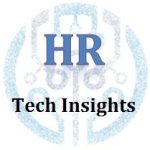There were three particularly useful lessons in a recent Visier white paper that I wanted to highlight for people leading people analytics. I’ve also added a fourth lesson of my own that is the most important of all.
1. The do-it-yourself trap
Analytics starts with Excel. Then you add in Tableau. Soon you bring in highly capable analytics professionals who can do wonders with sophisticated tools like R. The path you are on, and the natural path to continue on, will lead you to building your own analytics software. The HR analytics leader has to pull the team back and take a hard look at the total cost of building vs buying analytics software.
2. The embedded analytics trap
If we avoid the do-it-yourself trap, then the natural thing is to rely on the analytics embedded in the software you already own. However, companies often discover that software designed for transactions, like an HRMS, ATS or LMS, doesn’t have the data structures suitable for analytics. I’ve noticed that analytics tools like Visier, PeopleInsight, and Macromicro all wrestle the data into a datamart where it can be in a form suitable for analysis.
The HR analytics leader needs to be cautious about vendor claims that embedded analytics is all they’ll need. Be ready to buy extra tools.
3. The clean data trap
The dirty secret of all analytics is that the gleaming tools are no good without clean data. We’ve known that forever, but what we’re not told is that getting clean data can be so expensive that it’s often impractical to do so at a large scale. A tip of the hat to Visier for pointing out that rather than going on an impossibly huge data cleaning expedition you should clean data as you go; focusing on the most important data first.
The HR analytics leader needs to accurately scope out the costs of data cleaning projects with a recognition that in many cases the cost may be an order of magnitude too high to justify the effort. This doesn’t mean that you shouldn’t work on cleaning data; it’s just that you have to concentrate on the data you need most.
4. The tool first trap
The last insight is my own and I feel it’s the most important one of all. As much as I love the shiny tools, the carpenter matters a lot more. I see people eager to get a tool because they aren’t quite sure what to do with analytics; we know how that turns out.
The HR analytics leader must avoid the natural fixation on tools and first train people in the skills to identify business issues and construct solutions based on clear thinking. After that they’ll know exactly what data and analytics they need.
Special thanks to our community of practice for these insights. The community is a group of leading organizations that meets monthly to discuss analytics and evidence-based decision making in the real world. If you’re interested in moving down the path towards a more agile approach to people analytics, then email me at dcreelman@creelmanresearch.com or connect to me on LinkedIn.
